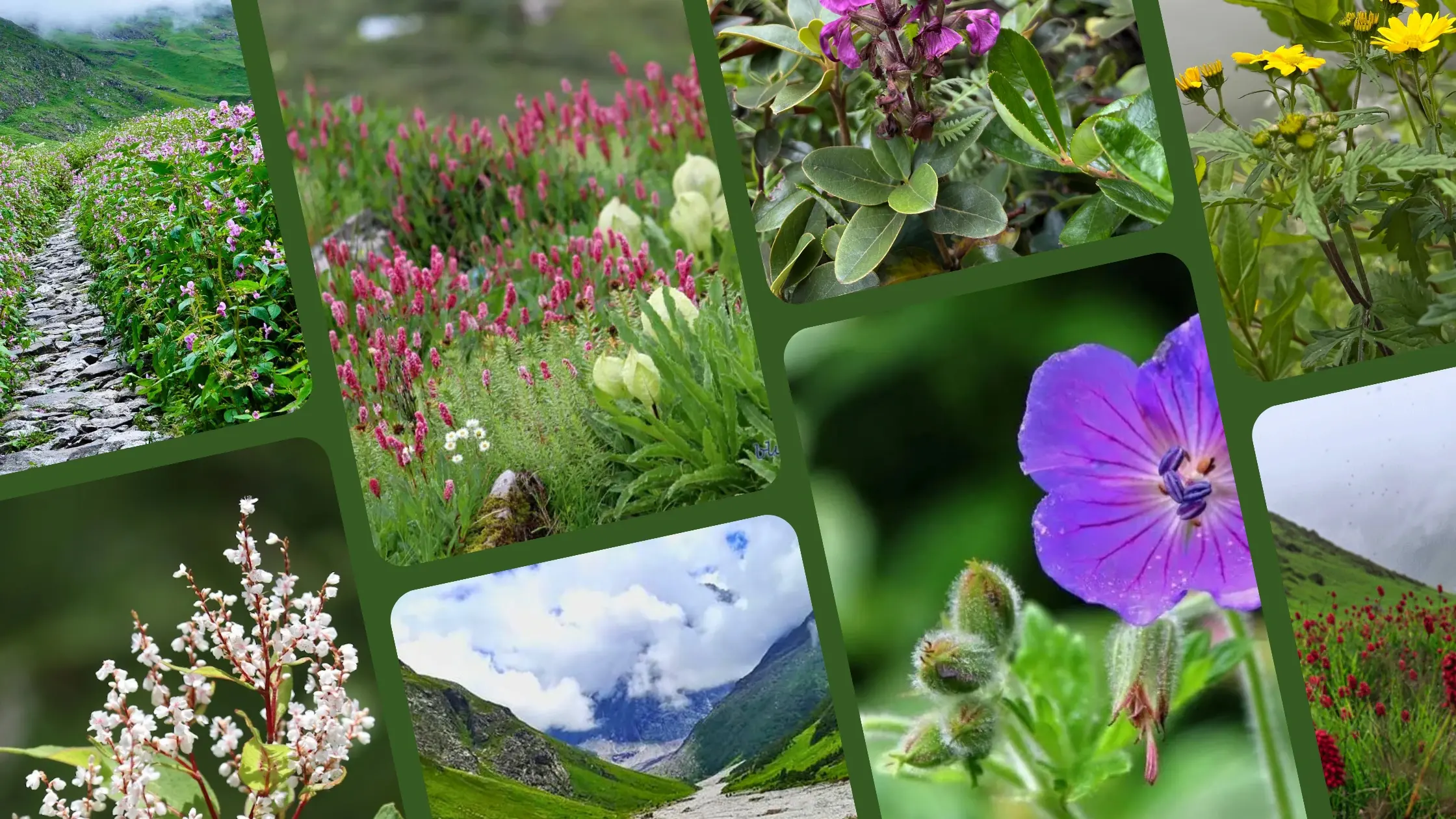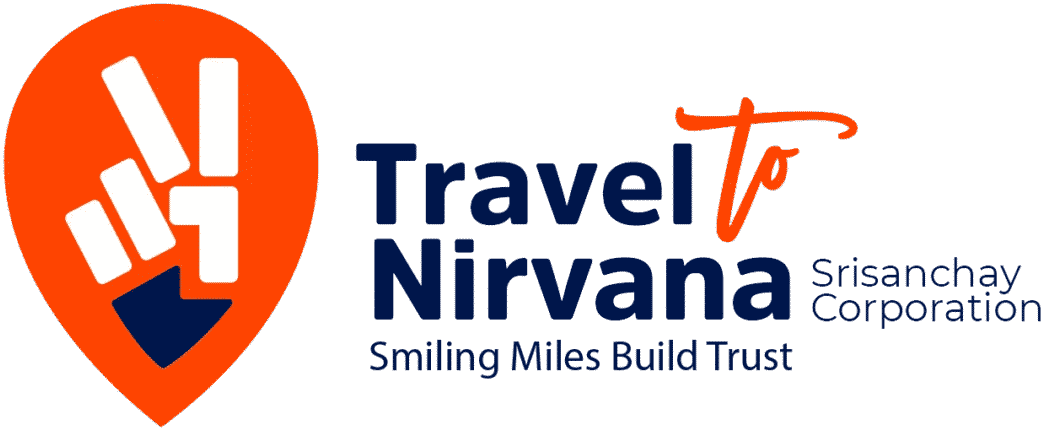The Valley of Flowers is nature’s own art gallery, nestled quietly in the Chamoli district of Uttarakhand, India. As soon as you step into this Himalayan sanctuary, the world behind seems to dissolve—emails, meetings, notifications—all replaced by endless fields of wildflowers, gurgling glacial streams, and the rhythmic hum of mountain winds.
Located at an altitude of about 3,600 meters (11,800 feet), this breathtaking valley is a UNESCO World Heritage Site and part of the Nanda Devi Biosphere Reserve. It comes alive between June and October, with July and August being the crown months when more than 600 species of alpine flora bloom in dramatic bursts of purple, yellow, red, and white.
But the Valley of Flowers isn’t just about visual beauty. It’s a sacred space—a place that has stirred the hearts of botanists, trekkers, mystics, and solo wanderers alike. Whether you’re seeking adventure, spiritual renewal, or a quiet escape from the chaos of daily life, this valley offers more than just views—it offers perspective.
In this blog, you’ll find everything you need to plan your Valley of Flowers trek in 2025—including the best time to go, how to get there, permits, what to pack, where to stay, and crucial trekking tips. Let’s begin your journey to one of the most enchanting and soul-stirring destinations in the Indian Himalayas.
Wildlife and Fauna Spotting in Valley of Flowers
Though the Valley of Flowers is primarily known for its botanical wealth, its fauna is equally fascinating, albeit more elusive. Due to its protected status and high-altitude location, it supports rare and endangered animal species.
Among the most sought-after sightings are:
- Himalayan Black Bear: Occasionally spotted in higher elevations, typically shy of human activity.
- Musk Deer: Known for their solitary behavior and strong sense of smell.
- Snow Leopard: Incredibly rare to see but known to inhabit the region.
- Red Fox and Blue Sheep (Bharal): More commonly spotted grazing near the fringes.
- Birds: The valley is a paradise for birdwatchers—look for Himalayan Monal, Griffon Vulture, and Snow Partridge.
Early morning treks and silent walking significantly increase your chances of spotting wildlife.
Weather and Climate Conditions
The weather in the Valley of Flowers is heavily influenced by its monsoon-dominated alpine climate.
Here’s what you can expect:
- June to Early July: Pleasant and relatively dry, good for trail conditions.
- Mid-July to August: Peak monsoon and flower bloom; carry rain gear.
- September: Drier, cooler weather with clearer views and vibrant colors.
- October: Cold, with flowers disappearing but golden autumn hues taking over.
Temperatures range from 5°C (night) to 20°C (day). Due to unpredictable rain and fog, it’s vital to layer your clothing, waterproof your gear, and trek in daylight.
What to Pack for the Trek
Here’s a complete trekking checklist for Valley of Flowers:
Clothing
- Moisture-wicking T-shirts
- Fleece or insulated jacket
- Waterproof jacket/poncho
- Thermal wear (nights are cold)
- Trekking pants (quick-dry)
- Gloves, cap, sunglasses
Gear
- Waterproof trekking shoes with good grip
- Trekking pole (especially useful on descent)
- Backpack (30–40L) with rain cover
- Headlamp or torch
- Water bottles or hydration pack
- First-aid kit with Diamox for altitude sickness
Essentials
- Government ID & permit copies
- Power bank, offline maps
- Biodegradable toiletries
- High-energy snacks: nuts, granola, energy bars
Avoid overpacking—every extra kilogram matters during a trek!
Hemkund Sahib and Valley Combo Trek
A must-do for many pilgrims and trekkers alike is combining the Valley of Flowers trek with a day trek to Hemkund Sahib, a revered Sikh shrine located at 4,329 meters.
- Distance from Ghangaria: 6 km, very steep gradient
- Time Required: 6–8 hours round-trip
- Why Go?
- Religious significance
- Stunning Hemkund Lake views
- Unique alpine flora including Brahma Kamal
Prepare for a challenging ascent—many opt for a mule ride or pony if not physically prepared.
Photography Tips for the Valley
Capturing the valley’s beauty requires more than just pointing your camera.
- Time of Day: Early morning (8–10 AM) offers soft lighting and fewer clouds.
- Weather: Post-rain photos capture the valley’s vibrant colors.
- Lenses: Bring a macro lens for flower details, and a wide-angle for landscapes.
- Drone Use: Restricted in protected areas—check local regulations before flying.
Always respect nature—avoid trampling flowers or going off-trail for that “perfect shot.”
Sustainability and Responsible Tourism
Being in a fragile ecosystem, responsible trekking is non-negotiable:
- Leave No Trace: Carry back all plastic waste.
- Support Local: Hire local guides, eat at local dhabas, and stay at village-run homestays.
- Respect Wildlife: Do not disturb or feed animals.
- Stick to Trails: Avoid wandering off marked paths to protect plant life.
Even one careless act can harm this delicate environment, so trek with mindfulness.
Solo Trekking Tips and Safety
Solo trekking offers freedom but also responsibility. Here’s how to stay safe:
- Start Early: Begin your trek by 7 AM.
- Inform Others: Tell your guesthouse or a fellow trekker your plan.
- Offline Tools: Download Maps.me or carry a compass.
- Avoid Risky Detours: Stick to marked trails at all times.
- Health First: Recognize early signs of AMS (Acute Mountain Sickness)—headache, nausea, fatigue.
While solo trekking in Valley of Flowers is common, especially among women, preparation is key.
Valley of Flowers for Beginners
Yes, beginners can absolutely undertake this trek! It’s ideal for first-time high-altitude trekkers if:
- You prepare physically for 2–3 weeks beforehand
- Stay well-hydrated
- Give yourself time to acclimatize at Ghangaria
Trekkers of all ages have successfully completed the journey, including families and senior citizens!
Cultural and Local Interactions
Interacting with the warm, simple people of the Garhwal region adds a human touch to your journey. Learn a few Hindi or Garhwali phrases, eat local dishes like dal-chawal, and listen to folklore passed down generations.
You may even meet villagers who remember the early days of the park and can share stories no guidebook can offer.
Food Options During the Trek
Ghangaria has basic yet hearty food options. Expect:
- Breakfast: Parathas, tea, bread-jam
- Lunch/Dinner: Dal, rice, sabzi, roti
- Snacks: Maggi, pakoras, momos, tea stalls
Carry dry fruits, protein bars, and electrolytes for trail energy. Avoid alcohol—it dehydrates you faster at altitude.
Mobile Network and Connectivity
Mobile connectivity is limited:
- BSNL works best in Ghangaria
- Jio may work intermittently
- No network inside the Valley
- No Wi-Fi—enjoy a true digital detox!
Download necessary documents, maps, and offline content before leaving Joshimath.
Medical Emergencies and First Aid
There is a small medical center in Ghangaria, but it’s best to carry your own kit. Include:
- Paracetamol, Ibuprofen
- Diamox (for AMS)
- Bandages, antiseptic cream
- ORS packets
- Inhaler (if needed)
For severe issues, Joshimath has a proper hospital (~1-day journey). Always trek insured if you’re a foreign national.
Trek Cost Breakdown
Here’s an estimate for a 5-day trek from Haridwar:
| Category | Cost (INR) |
| Transport (to Govindghat & back) | ₹2,500–₹3,000 |
| Accommodation (4 nights) | ₹2,000–₹3,000 |
| Food | ₹1,000–₹1,500 |
| Entry Permits | ₹150–₹250 |
| Misc. & Gear | ₹1,000–₹2,000 |
| Total | ₹7,000–₹10,000 |
Trek groups may charge ₹10,000–₹15,000 inclusive of guide and logistics.
Common Mistakes to Avoid
- Underestimating altitude: take it slow and acclimatize
- Packing heavy: optimize your gear list
- Ignoring weather warnings: monsoon rains can be dangerous
- Not carrying enough cash: no ATMs beyond Joshimath
Memorable Experiences and What to Expect
Expect to be emotionally moved. Whether it’s the morning mist hovering over a wildflower field, or a sudden burst of rainbow hues after a downpour—every moment in the Valley has a story. You’ll return with more than photographs; you’ll come back with clarity, calm, and wonder.
Valley of Flowers FAQs
Can I visit the Valley without trekking?
No, trekking is the only way to reach the Valley. There are no motorable roads beyond Govindghat.
Is a guide mandatory?
Not mandatory, but highly recommended for solo or first-time trekkers.
Can children or elderly complete the trek?
Yes, with proper acclimatization and pacing, even families with children or seniors have completed it.
Is the Valley open in winter?
No, it’s closed from November to May due to snow cover and landslide risk.
Are there washrooms on the trail?
Yes, basic ones at checkpoints and near Ghangaria, but not inside the Valley.
How long should I stay?
Minimum 3 days including travel. Ideal: 4–5 days to include Hemkund Sahib.
For a comfortable and reliable stay in Ghangaria, Ghangharia Inn by Travel to Nirvana is a top choice among trekkers. Conveniently located near the trailhead, this well-maintained property offers clean, cozy rooms and warm hospitality in the heart of the Himalayas. Surrounded by nature and managed by a friendly team, it provides a peaceful base to relax after exploring the Valley of Flowers or trekking to Hemkund Sahib. Guests often appreciate the calm ambiance, quality food, and personalized service that make it feel like a home away from home.
Conclusion and Final Thoughts
The Valley of Flowers is not just a trek—it’s a personal pilgrimage. A place where each flower tells a story, each stream sings a lullaby, and each step leads you closer to something profound—peace. In a world that never stops moving, this valley gently reminds you to pause, breathe, and bloom.
Whether you’re escaping burnout, chasing adventure, or seeking spiritual clarity, this magical destination promises all—and more.





